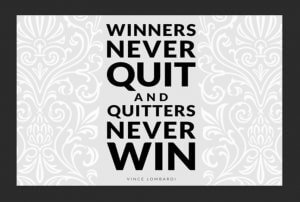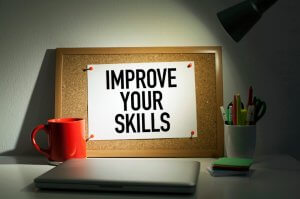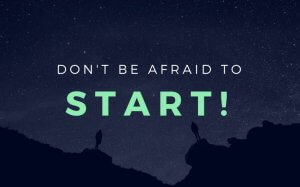Congratulations on your decision to become a forex trader! This self-made career path can really open the door to a lot of financial opportunities in your life and might even help you through retirement or hard times later on. You might have had some doubts when you started considering trading as an alternative way to make extra money, especially if you’ve heard the rumors that most traders fail, but we’re here with good news.
There are guaranteed ways to start off on the path to success, so long as you complete all the necessary steps BEFORE you actually open your very first trading account. If you follow along with our ultimate checklist, we can guarantee that you’ll start off on the right path with an advantage over other beginner traders.
Start with Beginner Education
If you want to trade, you need to start by educating yourself, or else you won’t know what’s going on. Here’s a list of some of the first things you’ll need to know:
- Terminology
- Factors that affect prices in the forex market and how the market works
- Information about the different currency pairs and instruments
- Forex trading sessions and hours
- Leverage and margin
- How to manage risk as a beginner
- Tips for beginners
- Trading psychology
- Navigating a trading platform
Of course, there’s a lot more to know, but these are some of the first topics you’ll want to tackle as a beginner so that you can understand more complicated topics later on. If you don’t understand common trading terms like leverage, pip, or spread, then you will be lost once you move on.
Fortunately, all of this information can be found on the internet for free. You can simply perform a quick Google search for “beginner trading topics” to get started, or head over to YouTube and type the same thing into the search bar if you’d prefer to watch educational videos. Once you think you have beginner education covered, we’d suggest taking some online quizzes to make sure you fully understood all of the content, then you’ll know you’re ready to move on.
Move On to More Advanced Material
Once you understand beginner related content, you’ll be more prepared to learn about more complicated subjects without becoming frustrated. Here are a few examples of the kind of content you should be looking for:
- Trading strategies
- Candlestick patterns
- Using indicators, signals, EAs
- Fibonacci tools
- Reading charts
- Technical and fundamental analysis
Once again, there’s a lot to learn here, and you’ll want to pay extra attention to content that teaches you how to develop and manage a trading strategy. Reading articles or books that have been written by expert traders is a great way to learn, as you might be able to find trading tips that inspire you. Also, be sure to research multiple types of trading styles and strategies so that you’ll be more knowledgeable when it’s time to develop your trading plan.
Choose a Forex Broker
At this point, you need to find a broker. This isn’t a decision that should be made with haste, as your choice will affect your entire trading experience. You should know that there are hundreds of options out there, but each broker wasn’t created equally. Here are some things to research and consider when it comes to choosing the broker that is best for you:
- Deposit minimums and associated account types
- Fees and charges (spread, commissions, withdrawal fees, inactivity charges, etc.)
- Available assets (currency pairs, commodities, stocks, cryptocurrency, etc.)
- Available trading platforms
- Customer service (hours and contact methods)
- Extra perks like bonuses and promotions
- Access to educational resources
- Regulation status
It’s a good idea to compare some of your favorite options and always lean towards regulated brokers to keep yourself safe in the event that your broker was to go out of business. One of the best ways to get an idea of whether a broker is trustworthy is to read user reviews online, but make sure these are coming from other websites besides your broker and take some of the bad reviews with a grain of salt, as some traders may blame the broker when they lost money at their own fault. If you can’t find any reviews online, you’re probably looking at a less established broker or possibly a scammer.
Develop a Trading Plan
One of the biggest beginner mistakes is opening a trading account with no plan. If you don’t know when, why, or what you want to trade, then you’ll be making random moves that don’t make much sense. Fortunately, you should know a lot about different types of trading plans and strategies from step 2, but you might need to do a little more research as you work to develop your plan. This is what your plan will need to cover:
- How often you will be trading (part-time, full-time, etc.)
- Rules for entering and exiting trades
- Factors you’ll look at when deciding to make a trade
- Goals you want to meet
- The types of instruments you want to trade
- How much money you’re willing to invest and risk on each trade
- Steps you’ll take to limit losses
It’s crucial to ensure that your time schedule will fit with your trading plan. Some plans require a lot more time in front of the computer screen, while others will allow you to remain less active. Remember that you’re setting yourself up for failure if you try to set a plan that requires you to trade during times when you may not be able to or if your plan is too complex for your skill level. Often times, the simplest plans produce the best results.
Practice on a Demo Account
At this point, you’re almost ready to open your first trading account! You’ve learned beginner and intermediate content, chosen a forex broker and developed a comprehensive trading plan. You’re probably feeling eager to get started, but you don’t want to skip out on using a demo account. This is the most hands-on tool you’ll have used so far and will help you to gauge your preparedness for trading on a real account.
You’ll want to start by opening a free demo account through your chosen broker’s website (Almost every forex broker offers this option). This will allow you to practice trading under the broker’s current conditions, become more familiar with navigating their trading platform and tools, and most importantly, to test out your trading plan with no financial risk.
As you practice on your demo account, you should keep a record of each trade just as if you were using a live account. Check for any issues that might need to be addressed so that you can tweak your strategy to perfection before you put any money on the line. Once you have a consistently profitable strategy that works, you can move on with confidence.
Open Your Trading Account
Congratulations! Once you reach this point, you’ve done everything you need to ensure that you’re starting off on the right path. Your broker will likely ask you for proof of identity and proof of address documents, so you’ll want to be sure to have these handy. Most people simply use a copy of their driver’s license and a utility bill for this step.
Of course, you should never stop pursuing a trading education along the way, and be sure to keep a detailed trading journal to keep a good record of your profits/losses. Now, get out there and open your first trading account!






